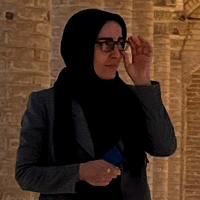Analysis of the Mina Khani Rug Preserved at the Brooklyn Museum using the Gestalt Theory of Visual Perception
Fine and perfect rugs are generally selected for preservation and weavings with distinct design and technique are seldom exhibited at the museums. Although the rug analyzed in this study has an asymmetrical and unconventional design, it is preserved at the Brooklyn Museum. The purpose of this study was understanding the interaction between the artist’s defiance of principles of perceptual organization and the audience’s perception based on gestalt theory. It seems that gestalt principles of uniform connectedness and closure justify the different and asymmetrical visual structure of the rug for the audience. The mina khani rug preserved at the Brooklyn Museum was studied based on the principles of alignment and emphasis and the principles of gestalt. The study aimed to analyze the law of prägnanz in this mina khani rug and determine which one of the seven principles of gestalt would apply to it. The findings indicated that the decentralized placement of the medallion outside the axis of symmetry signified the principle of emphasis and the principles of similarity, proximity, and closure were the most frequent. Selected through non-probability sampling, the sample was a rug from the twelfth century AH preserved at the Brooklyn Museum. This developmental study was descriptive-analytical as the principles of perceptual organization and the seven principles of gestalt were employed in the analysis. The data were collected through library research and were analyzed qualitatively. The results of the analysis of the audience’s visual perception using the principles of gestalt psychology were as follows. The principle of similarity was measured in dimensions and shape. Similarity was a powerful gestalt principle in the dimensions of vagirehs, shape of patterns, bands, and margins. The principle of proximity was used to study contact and overlap as it had a powerful field in the body of contact in the background and the contact point of the bands of every vagireh. The surrounding of the medallion and some parts of the vagirehs overlapped with the medallion. The continuity principle was most powerful in the refrains of the vagirehs. The closure principle was found most frequently at the convergence of khatai bands and the perimeter of the medallion and the convergence of khatai bands and the edges of the margins. In terms of the principle of figure-ground, the single-color context of the rug can be seen as the ground and the vagirehs or in other words, khatai bands filled with flowers, along with the medallion as the shape. The results of the study showed that based on the principles of alignment and emphasis, the magnified medallion is emphasized. In spite of the incompatibility of the viewer’s expectation and the number of structural attributes, the structure of the rug is not abnormal and the visual perception of the rug is facilitated by powerful gestalt principles such as similarity, proximity, closure, and continuity. The increased number of structural properties draws the audience’s attention, directing it towards its special use in the royal court and the deliberate replacement of the medallion.
- حق عضویت دریافتی صرف حمایت از نشریات عضو و نگهداری، تکمیل و توسعه مگیران میشود.
- پرداخت حق اشتراک و دانلود مقالات اجازه بازنشر آن در سایر رسانههای چاپی و دیجیتال را به کاربر نمیدهد.


